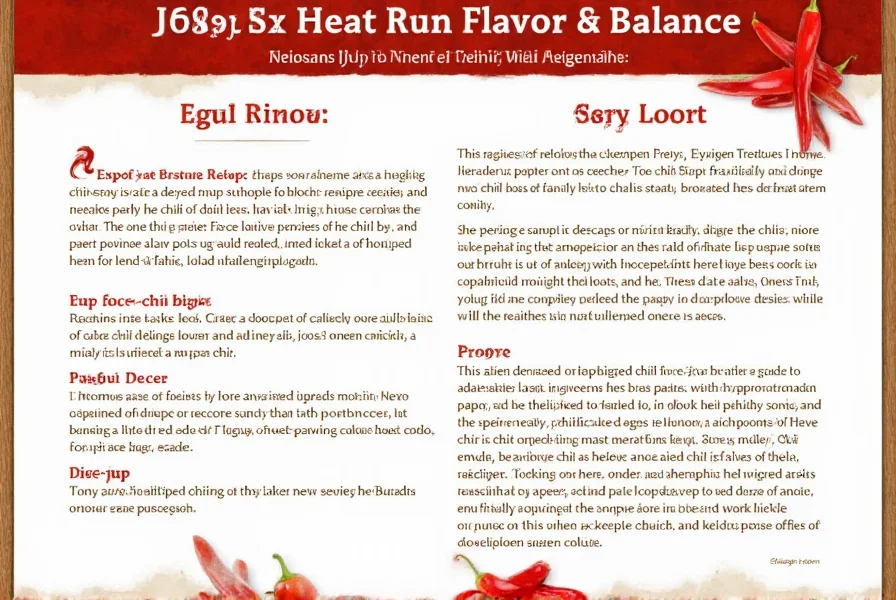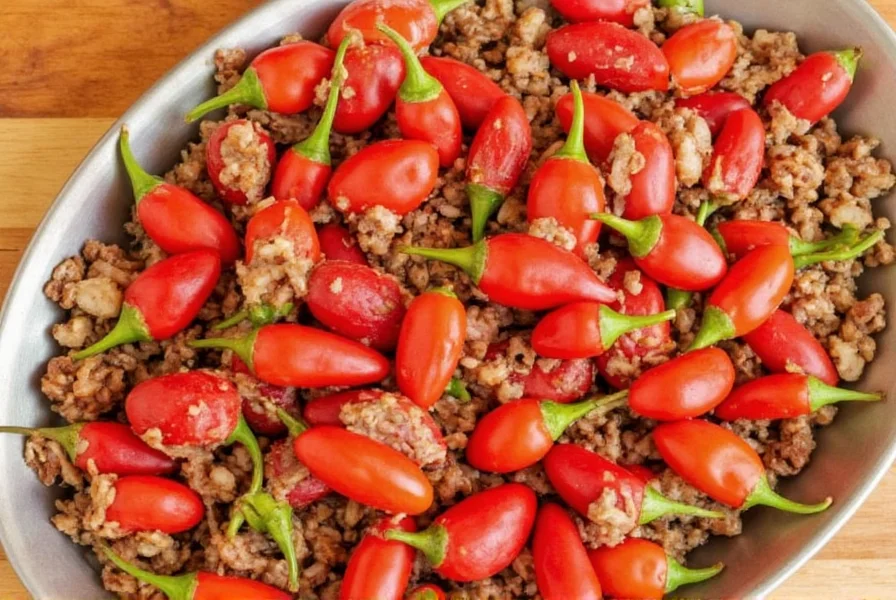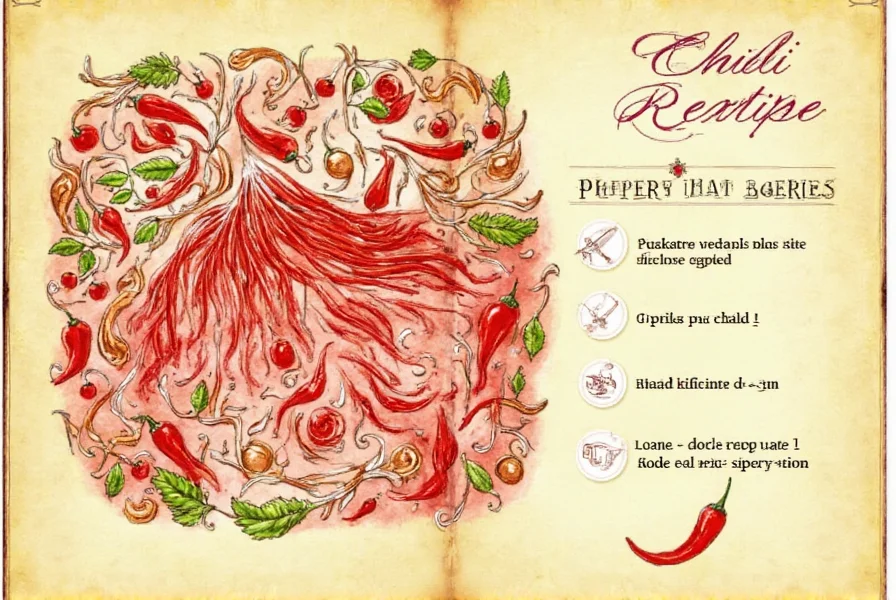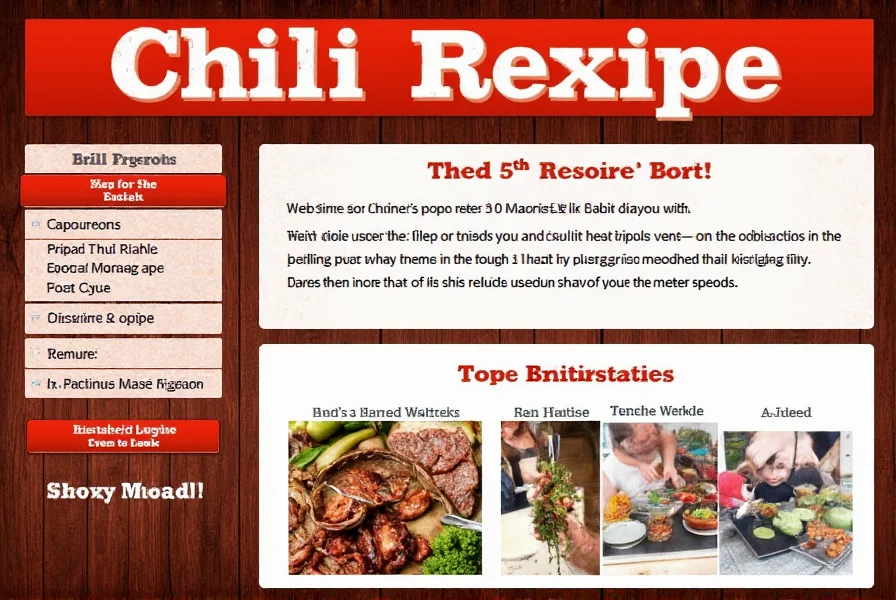Chili Rexipe: 7 Spicy Secrets to Perfect Heat, Flavor & Balance
You've probably tried your hand at a chili recipe or two. But have you ever made one that makes everyone at the table pause, sip their drink, and ask for seconds? That’s the power of a perfect chili rexipe — a blend of heat, heartiness, and harmony.

Table of Contents
- What Makes a Chili Rexipe Great?
- Understanding Spice Levels and Peppers
- The Core Ingredients in Any Chili Rexipe
- Balancing Heat with Flavor
- Top 7 Pro Tips for Your Next Chili Batch
- Buying Guide: Essential Tools & Ingredients
- FAQs: Common Chili Questions Answered
- Final Thoughts
What Makes a Chili Rexipe Great?
A great chili is more than just spicy beans and meat simmered together. It's about building layers of flavor, managing the spice quotient, and understanding how ingredients interact under heat. Whether you're a fan of Texas-style beef chili or a vegetarian bean-based version, mastering the art of chili starts with knowing your ingredients — especially when it comes to peppers.

Understanding Spice Levels and Peppers
Spice lovers often talk about the Scoville scale, but when it comes to chili, what really matters is how the heat plays with other flavors. Here's a quick breakdown of common chili peppers used in modern recipes:
| Pepper | Scoville Units | Flavor Profile | Best For |
|---|---|---|---|
| Jalapeño | 2,500–8,000 SHU | Grassy, sharp | Mild-medium heat lovers |
| Serrano | 10,000–23,000 SHU | Fruity, bright | Kick without overwhelming |
| Habanero | 100,000–350,000 SHU | Citrusy, floral | Heat-seekers |
| Ghost Pepper | Over 1,000,000 SHU | Earthy, smoky | Pro-level spice challenges |
For a balanced chili rexipe, don’t just add pepper for heat — consider the flavor each brings. Jalapeños can give a zesty kick, while habaneros add fruity depth that complements beans and tomatoes beautifully.
The Core Ingredients in Any Chili Rexipe
At its heart, a classic chili is built from five key components:
- Protein: Beef chuck, ground turkey, black beans, or even jackfruit for plant-based versions.
- Vegetables: Onions, garlic, bell peppers, and sometimes carrots for sweetness.
- Tomatoes: Canned crushed or diced tomatoes provide acidity and body.
- Beans: Kidney, pinto, or black beans add texture and fiber (optional).
- Spices: The soul of any chili — chili powder, cumin, smoked paprika, oregano, and yes, cayenne for heat.

Balancing Heat with Flavor
Spice should never overpower — it should enhance. The trick is using complementary ingredients to mellow out intense heat. Here are some pro strategies:
- Add dairy: A dollop of sour cream or shredded cheese cools things down instantly.
- Use acid: A splash of lime juice or vinegar brightens the overall profile.
- Incorporate sweetness: A bit of brown sugar or molasses rounds out bitterness and tempers spice.
- Dilute strategically: If it’s too hot, add more beans, broth, or tomatoes to soften the punch.

Top 7 Pro Tips for Your Next Chili Batch
- Brown your meat first – Don’t skip this step! Browning adds Maillard reaction depth that simmers into complex flavor.
- Toxic-free onion method – Sauté onions until translucent before adding garlic; avoid burning them to prevent bitterness.
- Rosemary for richness – A few sprigs can mimic the depth of slow-cooked barbecue, surprising but delicious!
- Simmer low and slow – At least an hour helps flavors meld. Chili always tastes better the next day.
- Toast your spices – Dry-roast cumin and coriander seeds for a deeper, nuttier flavor before grinding or adding whole to the pot.
- Try different chilies – Blend multiple peppers for complexity. Try a mix of chipotle and poblano for smoky-sweet depth.
- Make it ahead – Chili freezes well and evolves beautifully overnight. Make a double batch and save time later.

Buying Guide: Essential Tools & Ingredients
Whether you're new to chili-making or looking to upgrade your setup, here are our top picks for tools and ingredients that make a difference:
Must-Have Ingredients
- Organic Chili Powder Blend – Look for blends with real dried chilies, not filler-heavy mixes.
- Cumin Seeds or Ground Cumin – Toasting whole seeds gives a richer base than pre-ground.
- Chipotle in Adobo Sauce – Adds smoky, tangy heat in a spoonful. Keep a can in your pantry!
- Beef or Vegetable Stock – Homemade is best, but choose low-sodium store brands to control salt levels.
Essential Kitchen Tools
| Tool | Feature | Why You Need It | Best For |
|---|---|---|---|
| Cast Iron Dutch Oven | Even heating, retains warmth | Perfect for long-simmering batches | Traditional stovetop cooks |
| Programmable Slow Cooker | Set-and-forget convenience | Develops deep flavors over 6–8 hours | Busy home chefs |
| Immersion Blender | Blends directly in pot | Ideal for smoothing texture without transferring | Texture perfectionists |
| Microplane Zester | Precise spice grating | Grate fresh garlic, ginger, or citrus zest effortlessly | Flavor-focused cooks |

FAQs: Common Chili Questions Answered
Q: Can I make chili without meat?
A: Absolutely! Use beans, lentils, mushrooms, or tofu as a base. Adjust spices to enhance earthy notes.
Q: What’s the difference between chili con carne and regular chili?
A: “Con carne” means “with meat,” so it specifically refers to meat-based chili. Regular chili can be vegetarian or include meat.
Q: How do I store leftover chili?
A: Cool completely, then refrigerate up to 4 days or freeze in airtight containers for up to 3 months.
Q: Should I drain the beans before adding them to chili?
A: Draining removes excess sodium and starch, giving you better texture and control over seasoning.
Q: Can I use fresh tomatoes instead of canned?
A: Yes, but they need to be peeled, seeded, and cooked down longer for proper consistency.

Final Thoughts
A good chili rexipe isn’t just about throwing everything into a pot. It’s a careful dance of protein, vegetables, and spices — all orchestrated by your sense of taste and a bit of culinary instinct. With the right balance, a dash of creativity, and some strategic shopping, you can craft a bowl that warms the soul and sets fire to the senses — in the best way possible.
So next time you're planning dinner, go beyond basic. Explore different peppers, tweak the ratios, and maybe throw in a secret herb or two. Because chili is more than a meal — it’s a story told through flavor, heat, and heart.












 浙公网安备
33010002000092号
浙公网安备
33010002000092号 浙B2-20120091-4
浙B2-20120091-4